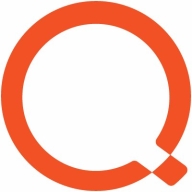

Microsoft Configuration Manager and KACE Cloud Companion are in the endpoint management space. KACE Cloud Companion has an edge in terms of cost and support, while Microsoft Configuration Manager is strong in features.
Features: Microsoft Configuration Manager offers advanced integration with Windows environments, Active Directory integration, and comprehensive compliance settings. KACE Cloud Companion provides flexibility in cloud-based management, intuitive inventory capabilities, and remote management.
Ease of Deployment and Customer Service: Microsoft Configuration Manager deployment can be complex and often requires substantial IT expertise, although it has strong support structures. KACE Cloud Companion simplifies deployment with a cloud-focused approach and is praised for effective customer service and ease of use, making it more suitable for organizations with limited IT resources.
Pricing and ROI: Microsoft Configuration Manager has higher upfront costs but offers long-term ROI for organizations within the Microsoft ecosystem. KACE Cloud Companion has a more accessible pricing model with favorable ROI for small to medium enterprises looking for a lower cost of entry.

| Company Size | Count |
|---|---|
| Small Business | 20 |
| Midsize Enterprise | 13 |
| Large Enterprise | 63 |
KACE Cloud Companion is a comprehensive tool designed for streamlined IT asset management, providing automation and visibility for enhanced efficiency in IT environments.
Combining flexibility and scalability, KACE Cloud Companion offers IT administrators a reliable platform to manage assets, automate processes, and maintain compliance. Users benefit from real-time data access, which supports informed decision-making and efficient task management. Feedback highlights its role in simplifying complex IT workflows, with continuous updates reflecting its commitment to evolving technological needs. While effective, some areas for enhancement include advancing cloud integration capabilities.
What are the key features of KACE Cloud Companion?KACE Cloud Companion proves valuable in industries such as healthcare, education, and finance, where IT asset management is crucial for security and operational efficiency. Its flexibility makes it adaptable to different sector requirements, supporting diverse IT infrastructures with its robust features.
Microsoft Configuration Manager streamlines IT management with features such as software deployment, patch management, and automation, centralizing operations for Windows environments. Integration with Microsoft products allows efficient oversight of workstations and servers.
Microsoft Configuration Manager provides comprehensive IT management, offering software deployment, patch management, and application pushing. Automation reduces manual tasks, ensuring consistency across systems. Centralized management enables standardized OS deployments, application updates, and configuration integrity. Integration with Microsoft products facilitates seamless operations, while hardware and software inventory, compliance reporting, and remote control functions enhance IT management. Users seek improvements in application deployment for those without deep scripting knowledge and desire better WSUS control, PowerShell and Intune integration, Linux compatibility, and user interface enhancements. Performance improvements are requested for remote user management and third-party application support.
What features enhance Microsoft Configuration Manager?Microsoft Configuration Manager is widely implemented in organizations to manage Windows workstations and servers. It is essential for deploying operating systems and applications, managing software updates, and conducting hardware and software inventories. The tool is crucial for endpoint and configuration management, ensuring compliance, and automating processes like patching and vulnerability management. Industries such as finance, healthcare, and education rely on Microsoft Configuration Manager to keep systems secure and operational, adapting it to address their specific needs and challenges in maintaining diversified IT environments.
We monitor all Patch Management reviews to prevent fraudulent reviews and keep review quality high. We do not post reviews by company employees or direct competitors. We validate each review for authenticity via cross-reference with LinkedIn, and personal follow-up with the reviewer when necessary.